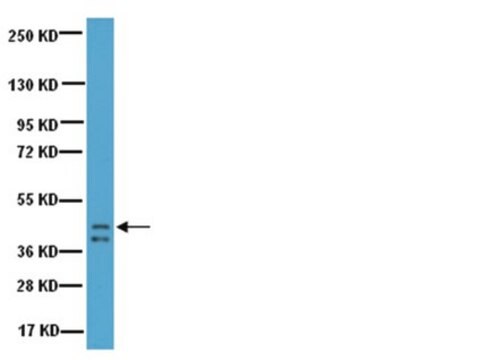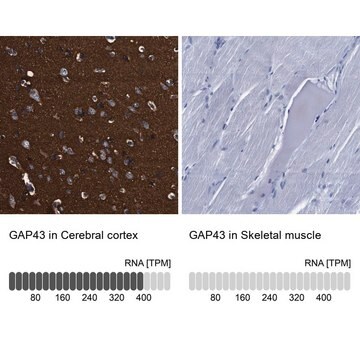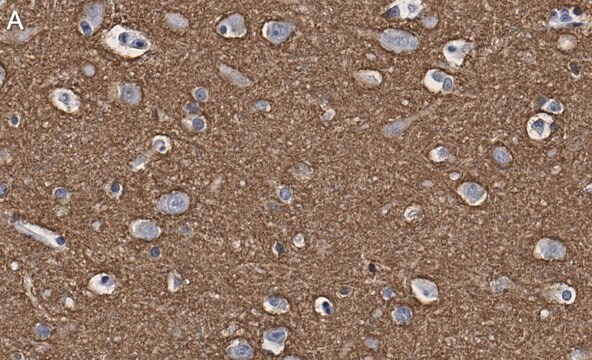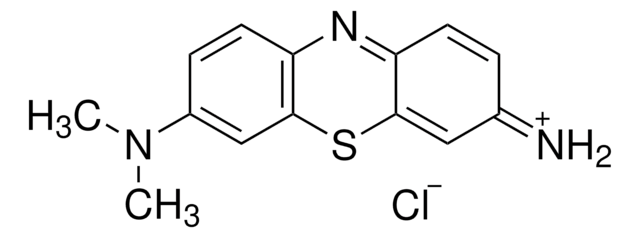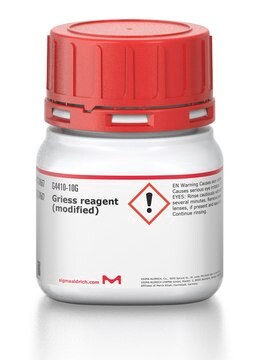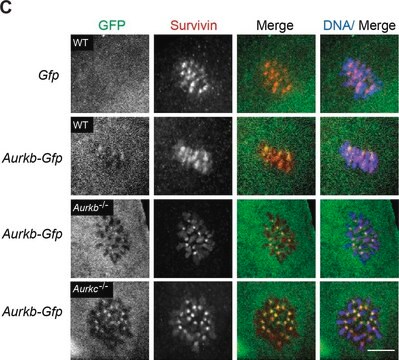G9264
Monoclonal Anti-Growth Associated Protein-43 antibody produced in mouse
clone GAP-7B10, ascites fluid
Sinónimos:
Anti-GAP-43
About This Item
Productos recomendados
origen biológico
mouse
Nivel de calidad
conjugado
unconjugated
forma del anticuerpo
ascites fluid
tipo de anticuerpo
primary antibodies
clon
GAP-7B10, monoclonal
mol peso
antigen 46 kDa
contiene
15 mM sodium azide
reactividad de especies
hamster, human, feline, rat, chicken, snake, mouse
técnicas
immunohistochemistry: suitable
western blot: 1:2,000 using newborn rat brain extract
isotipo
IgG2a
Nº de acceso UniProt
Condiciones de envío
dry ice
temp. de almacenamiento
−20°C
modificación del objetivo postraduccional
unmodified
Información sobre el gen
human ... GAP43(2596)
mouse ... Gap43(14432)
rat ... Gap43(29423)
Categorías relacionadas
Descripción general
Especificidad
Inmunógeno
Aplicación
- immunostaining of tissue sections from the prefrontal cortex and hippocampus of rat pups to recognize an epitope present on kinase C domain in the N terminal of GAP-43 protein
- immunohistochemistry at a working dilution of 1:3000 using sections from fetal and adult brains of mice
- immunofluorescence at a working dilution of 1:4000 using 8μm sections of mice brain
- western blotting using hippocampal lysates from rats
Acciones bioquímicas o fisiológicas
Cláusula de descargo de responsabilidad
¿No encuentra el producto adecuado?
Pruebe nuestro Herramienta de selección de productos.
Opcional
Código de clase de almacenamiento
10 - Combustible liquids
Clase de riesgo para el agua (WGK)
WGK 2
Punto de inflamabilidad (°F)
Not applicable
Punto de inflamabilidad (°C)
Not applicable
Certificados de análisis (COA)
Busque Certificados de análisis (COA) introduciendo el número de lote del producto. Los números de lote se encuentran en la etiqueta del producto después de las palabras «Lot» o «Batch»
¿Ya tiene este producto?
Encuentre la documentación para los productos que ha comprado recientemente en la Biblioteca de documentos.
Los clientes también vieron
Nuestro equipo de científicos tiene experiencia en todas las áreas de investigación: Ciencias de la vida, Ciencia de los materiales, Síntesis química, Cromatografía, Analítica y muchas otras.
Póngase en contacto con el Servicio técnico